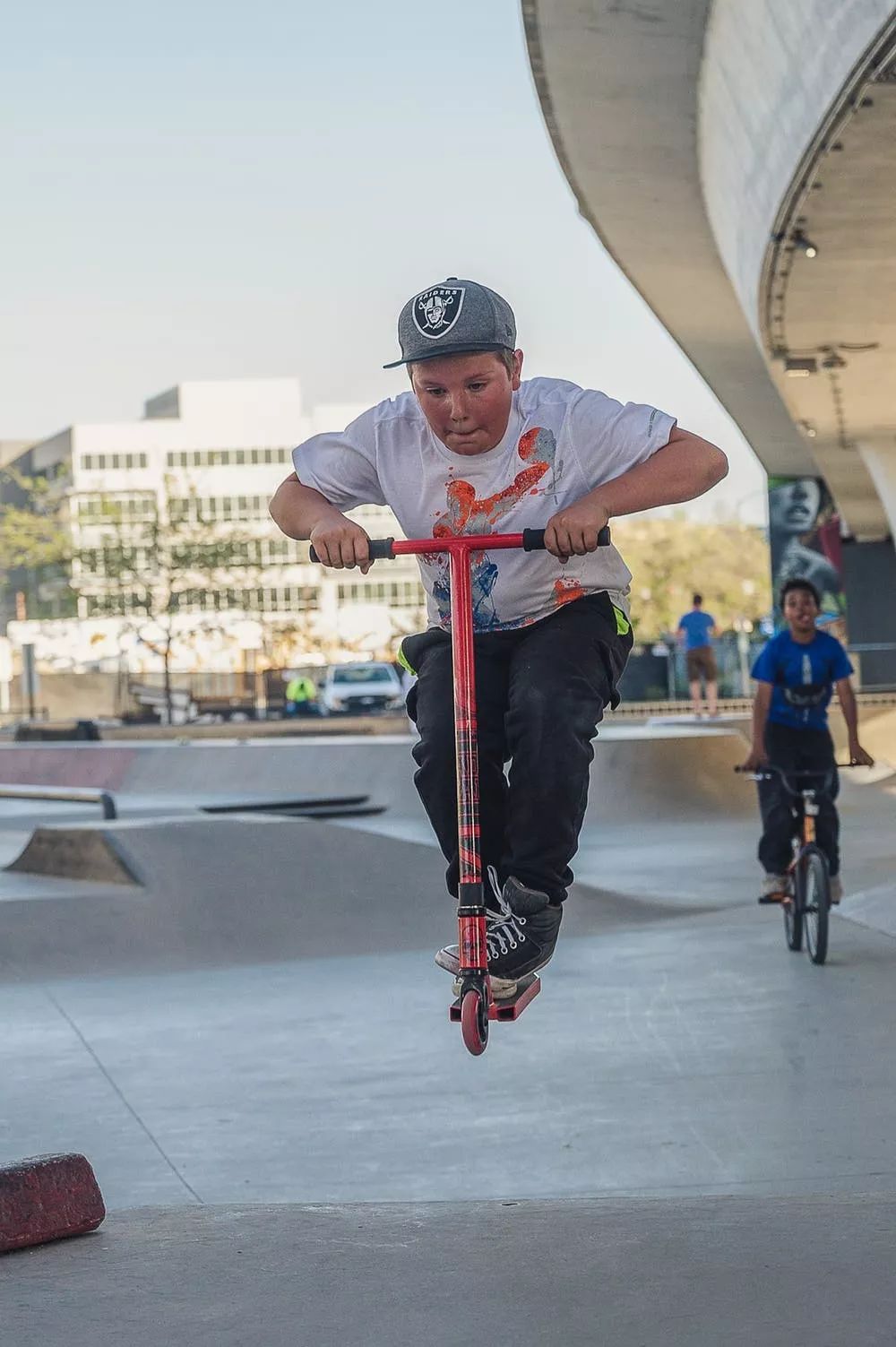说起共享经济,我们恐怕马上就会想起共享单车。
美国一家公司Spin也是做共享单车起家的,成立于 2016 年,创始人就是受到了中国共享单车的启发才创办的公司。
但是创建后,公司发现美国人对滑板的需求是自行车的10-20倍,然后就转变业务方向,成为了一家共享滑板公司。
今天看新闻看到,Uber将巴黎的创业公司Cityscooter纳入了自己的出行选择范围。
2018年11月,Lyft收购了Motivate共享单车公司以后,成为了美国最大的共享单车公司,占美国市场的80%。这种情况下,Uber一直在努力多元化自己的服务,今年7月份,还给独角兽公司Lime投资了3.35亿美元,开启了共享电动滑板车(shared electric scooter)业务。
共享电动滑板车红红火火,但也不是没有问题,各大公司投放的数量多,人们使用起来很方便。但是,数据显示,投放的电动滑板车基本上使用寿命都只有几个月,而每辆车的造价在300-400美元之间。
除了烧钱,用户使用这些车辆时不遵守交通规则、胡乱摆放也造成了困扰,政府表示有意见。
那么,总结起来,美国共享电动滑板车和单车到底面临哪几方面的问题呢?
CNN文章给出了答案,我们一起来看看吧。


Congested streets[1], dying batteries and fragile design: These are the problems e-bikes and scooters must overcome

图片来自CNN
Shared electric scooters and bikes[2] seem to have popped up overnight[3] in cities throughout the world. E-scooter brands, such as Bird and Lime, are now known from Paris to Los Angeles. They have become an easy and affordable way for people to get around[4], and will further reduce traffic congestion and carbon emissions as more riders start using them.
[1]congested streets:街道交通拥堵
[2]shared electric scooters and bikes:共享电动滑板车和单车
[3]pop up overnight:一夜之间突然出现
[4]for people to get around:方便人们出行
Electric micromobility has already assured its place in the sharing economy[1]. Future generations will visit a city and think nothing of zipping to their destination on shared transportation[2].
The National Association of City Transportation Officials reported that people took 84 million trips using shared bikes, e-bikes and e-scooters in the United States in 2018, more than double the number of trips taken in 2017. And globally, e-bike sales are expected to reach $24.3 billion by 2025.
That said[3], there are still several challenges the industry needs to overcome before we see e-scooters and e-bikes become a regular part of our daily lives[4].
[1]sharing economy:共享经济
[2]shared transportation:公共交通
[3]that said:即便如此
[4]a regular part of our daily lives:日常生活中的一部分

Infrastructure
Many communities and municipalities have viewed shared scooters and bikes as toys — or worse —nuisances[1]. Some of this is due to scooters left on corners and sidewalks, which can block paths for pedestrians and cause unsafe conditions[2]. Also, a lack of dedicated bike lanes[3] can be dangerous for riders sharing the roads with cars.
As micromobility grows, cities need better infrastructure. This includes dedicated traffic lanes, giving e-scooters and e-bikes more room on the road.
Some cities may limit the number of e-scooters and e-bikes operating in certain densely populated areas[4] to alleviate parking congestion. Additional infrastructure could include dedicated space to abate parking headaches.
[1]nuisance:n. /?nju?sns/ “麻烦精”
[2]cause unsafe conditions:造成安全隐患
[3]dedicated bike lanes:专门划分的自行车车道
[4]densely populated areas:人口稠密区
Design
Scooters are an appealing product to users and manufactures alike. Millennials remember their manual Razor scooters, and manufacturers enjoy the ease of producing off-the-shelf machines[1] that can easily be branded with any company logo.
But now there's an opportunity to experiment with design, like producing scooters and e-bikes with larger wheels and more stable frames[2], enabling safer and more rugged products[3] and improving rider satisfaction.
For manufacturers and ride-sharing companies, improvements in performance and durability allows e-scooters and e-bikes to stay in the market longer, which increases profits and allows for more sustainable manufacturing resources[4].
[1]off-the-shelf machines:现成常备的产品
[2]more stable frames:更稳定的支架
[3]more rugged products:更坚固的产品
[4]manufacturing resources:制造资源

These design changes are already happening. New micromobility designs hit the streets on a seemingly daily basis.
Some designs feature varied standing and seating positions, while others offer more space. For example, Boosted has created the Rev electric scooter with a higher weight capacity[1] and can now carry adults weighing up to 250 pounds — 30 pounds more than typical e-scooters. It also has a larger board[2] for riders with larger feet.
Technology
Battery technology is rapidly advancing and will eventually be reliable enough for multiple users to travel long distances on one charge. But the electric motor and the durability of the overall vessel still need to be improved before we see fewer damaged or undercharged scooters on the roads.
Most products currently on the market are older designs that cannot effectively climb hills and have limited weight capacity.
[1]weight capacity:承载重量
[2]a larger board:踏板更大
To truly achieve their potential, they need much more power and range. These improvements will enable people to travel further and over more extreme terrain[1], like delivery workers who cover expansive distances and varied terrain during their long shifts.
Riders are often forced to leave their e-scooter or e-bike wherever it runs out of power[2]. At Linear Labs, we've engineered a micromobility version of our patented Hunstable Electric Turbine (HET) electric motor solution that produces enough torque[3] to conquer extreme inclines and increase range.
Electric micromobility is here to stay. Once we are able to optimize municipal infrastructure and product design, as well as enhance technology and durability, even more riders will embrace e-scooters and e-bikes. We will then reach the critical mass[4] necessary to feel a true impact on traffic congestion and environmental sustainability.
[1]terrain:n. /t??re?n/ “地形”
[2]run out of power:没电了
[3]torque:n./t??k/ “扭矩”
[4]critical mass:临界规模
注:
扭矩是使物体发生转动的一种特殊的力矩。在功率固定的条件下它与发动机转速成反比关系,转速越快扭矩越小,反之越大,它反映了汽车在一定范围内的负载能力。
Critical mass is the point at which a growing company becomes self-sustaining, and no longer needs additional investment to remain economically viable.
(内容来自网络)
觉得也挺有意思的,根据国内的共享单车,美国兴起了共享电动滑板车。
产品服务更符合美国人的习惯,成功博得了“微出行” (Micro-Mobility)头筹。看来呐,产品服务还是得本地化。

接下来,微出行会如何发展呢,我们共同期待吧。
推荐阅读:





